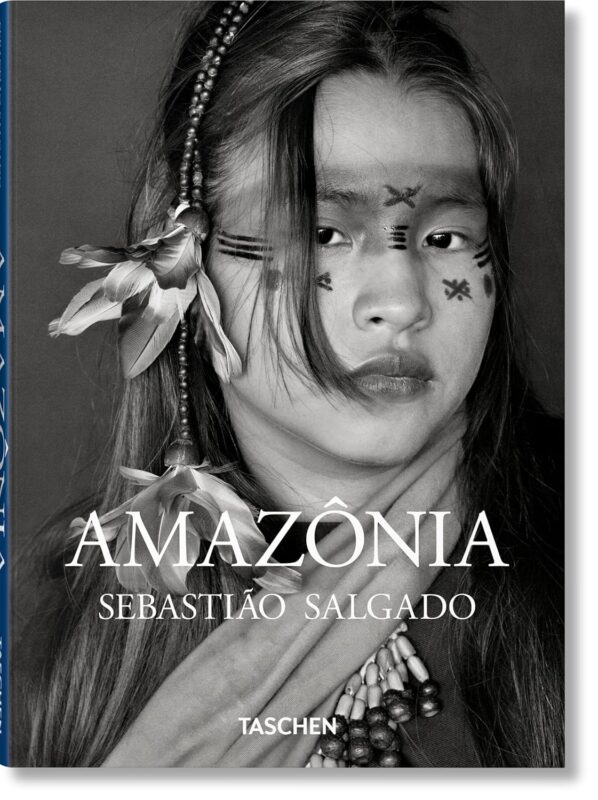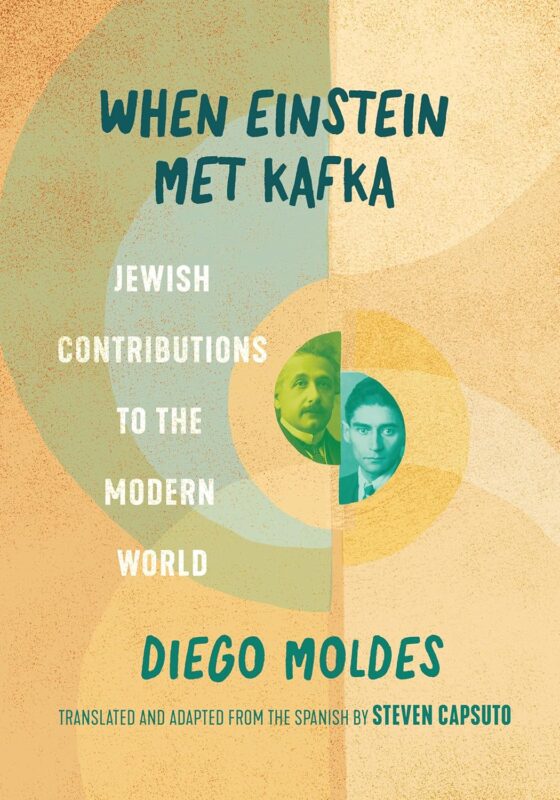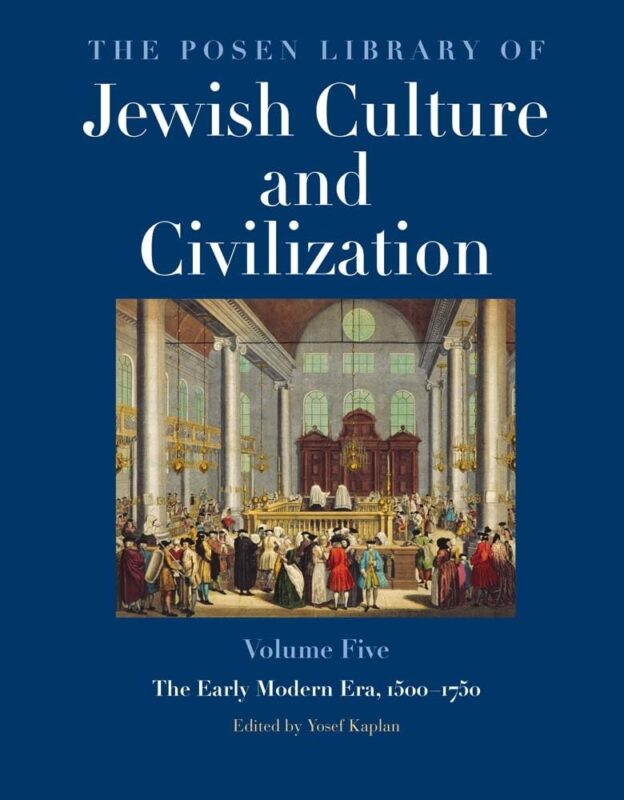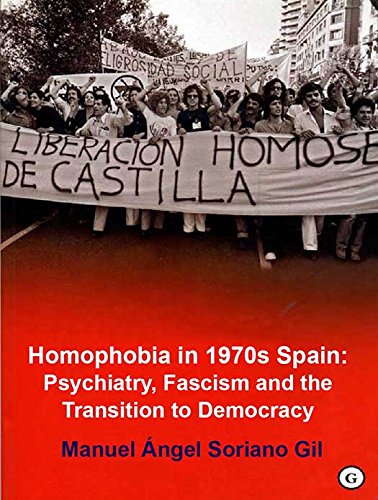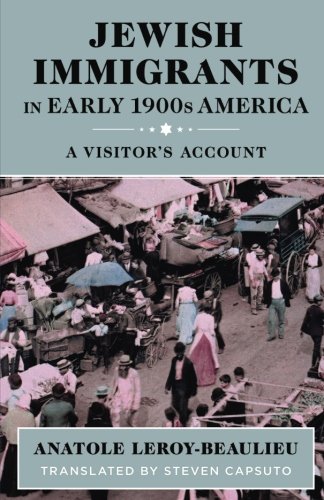“Amazônia” (coffee table edition) – Hardcover. Taschen, 2022.
For six years, Sebastião Salgado traveled the Brazilian Amazon and photographed the unparalleled beauty of this extraordinary region: the rainforest, the rivers, the mountains, the people who live there—this irreplaceable treasure of humanity in which the immense power of nature is felt like nowhere else on earth.
More info →“Amazônia” (smaller edition) – Hardcover. Taschen, 2022.
For six years Sebastião Salgado traveled the Brazilian Amazon and photographed the unparalleled beauty of this extraordinary region: the rainforest, the rivers, the mountains, the people who live there—this irreplaceable treasure of humanity in which the immense power of nature is felt like nowhere else on earth.
More info →“When Einstein Met Kafka: Jewish Contributions to the Modern World” – Hardcover, Ebook. Mandel Vilar Press, 2025.
While Jews account for only 0.2 percent of the world’s population and no more than 2.5 percent of any country except Israel, they have made some of the greatest contributions to world culture in fields ranging from physics and philosophy to music and art. What accounts for the extraordinary breadth of these achievements? The author locates part of the answer in Jewish culture itself, with its emphasis on literacy, learning, inquiry, and questioning. He profiles thousands of individual Jews’ decisive contributions to fields as diverse as medicine, artificial intelligence, history, economics, business, finance, computing, sports, film, architecture, and more!
More info →“The Posen Library of Jewish Culture and Civilization, Volume 5: The Early Modern Era, 1500-1750” – Hardcover. Yale University Press, 2023.
An impressive collection of Jewish primary sources from the 16th to mid-18th century: a diverse international array of texts and images reflecting the extraordinary richness and diversity of Jewish life in the early-modern period. I’m part of a huge team of freelance translators working on this 10-volume anthology. (I have some translations in volume 5 and in the forthcoming volume 4.)
More info →“Three Passover Tales by Sholem Aleichem”- Ebook. Between Wanderings, 2021.
Sholem Aleichem—that iconic, versatile Yiddish writer—explores Passover themes in these three short stories, newly translated into English:
“An Early Passover” is a satire about a Hasidic refugee from Eastern Europe who finds himself living among middle-class Reform Jews in Germany. “A Village Passover” explores the idyllic friendship between a little Jewish boy and a Christian boy in the Ukrainian countryside during Passover. “The Lovebirds” is an oddity: a Passover horror fantasy involving food, death, and kidnapping.
It concludes with excerpts from the author’s Passover letters to family members, expressing his longing to have everyone together at the Seder.
More info →“Brown Scarf Blues” – Hardcover, Paperback, Ebook, Audiobook. Moben, 2020.
Reeling from the deaths of two loved ones, an Israeli writer travels to Spain—his ancestors' homeland—for a conference of Sephardic Jews. In Seville, he finds a scarf that comforts him for thirteen days. Just as suddenly, it vanishes. He eventually sees the scarf as a symbol of loss, of the dead, of people he never became and never will be. But just as he lets go of his dreams, he meets some Spanish Jews who were lost in the Amazon for 150 years, who he once wrote about in a novel. Did he just imagine them?
More info →“Scenes of Jewish Life in Alsace” – Paperback, Ebook. Between Wanderings, 2018.
VILLAGE TALES FROM 19TH-CENTURY FRANCE
The author of these charming stories grew up in a picturesque Yiddish-speaking village in 1830s France. His tales evoke the people and folkways of a rural Jewish world that was vanishing quickly.
In these stories, you'll meet Salomon, Yedele and their loved ones. You'll share their joys, losses, courtships and holiday celebrations. You'll also meet traditional Alsatian storytellers who recount Yiddish folk tales of ghosts and sorcery, and of "wonder rabbis" who could banish demons and lift curses.
More info →“Homophobia in 1970s Spain: Psychiatry, Fascism and the Transition to Democracy” – Ebook. Egales, 2016.
In 1979, the year when Spain finally decriminalized homosexuality, a professor in Madrid rejected a doctoral thesis on a topic he had previously approved. On reading the finished dissertation, he decided that gay people's legal status in 1970s Spain was an unacceptable subject for a thesis after all and told the student to write about a completely different topic. Decades later, in the 2010s, Egales (Spain's leading publisher of LGBTQ books) published that old thesis in the original Spanish and invited me to translate it into English for this ebook release.
More info →“Sephardic Jews and the Spanish Language” – Paperback, Ebook. Between Wanderings, 2016.
With letters and photos from Jews in early-1900s Turkey, Morocco, Palestine, Austria and Romania
In 1903, four centuries after Spain expelled the Jews, a Spanish senator launched a campaign to have his country reopen relations with their descendants, the Sephardic Jews. To promote the campaign, he wrote this classic book. This new annotated translation makes it available in English for the first time.
Eager to let Jews speak for themselves, he devoted a third of the book to photos and letters from Sephardim in different countries, in which they describe their communities, synagogues, schools, families, literature and aspirations.
More info →“Jewish Immigrants in Early 1900s America: A Visitor’s Account” – Paperback, Ebook. Between Wanderings, 2016.
A photo-illustrated booklet celebrating Jewish immigrant life in America
From the 1880s to 1920s, more than 2 million Jews immigrated to the United States. Most were fleeing poverty and persecution in Eastern Europe and the Russian Empire. As their numbers swelled, Jews in America built new identities and strong communities.
At the height of that migration, this French writer, a scholar of anti-Semitism, toured the eastern US to see how the refugees were doing. “I had already visited most of the Jewish quarters in Europe, Asia and Africa,” he explained. Now he wanted to explore the crowded, bustling Jewish neighborhoods of America. What he saw amazed him.
More info →




